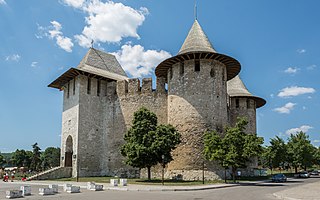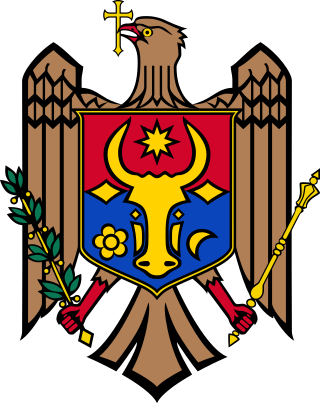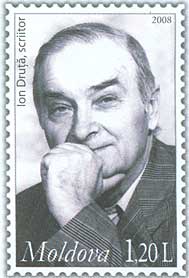
Soroca is a city and municipality in Moldova, situated on the Dniester River about 160 km (99 mi) north of Chișinău. It is the administrative center of the Soroca District.

Moldova is divided administratively into two levels:

Between 1999 and February 2002, Moldova was divided into 12 territorial units, including 1 municipality, 1 autonomous territorial unit, 1 territorial unit, and 9 counties :
- Chișinău municipality, surrounded by Chișinău County, but different from it
- Bălți County (Bălți)
- Cahul County (Cahul)
- Chișinău County (Chișinău)
- Edineț County (Edineț)
- Lăpușna County (Hîncești)
- Orhei County (Orhei)
- Soroca County (Soroca)
- Tighina County (Căușeni)
- Ungheni County (Ungheni)
- Găgăuzia, autonomous territorial unit (Comrat)
- Stânga Nistrului, territorial unit (Dubăsari)

Soroca is a district in north-east Moldova. Its administrative center is the town of Soroca. In 2018, the population of the region was 100,078.

Soroca County was a county in the Kingdom of Romania between 1925 and 1938 and between 1941 and 1944. The seat was Soroca.
Armenians in Moldova are the ethnic Armenians that live in Moldova. They settled in the Principality of Moldavia since the Late Middle Ages, and were well known as a merchant community. They prospered, and built a number of Armenian churches. Since the 18th century, however, their numbers decreased due to assimilation and emigration to other countries. During Soviet occupation, the number of Armenians increased a little, both during the 1950s-1980s, and when new immigrants came from Armenia, Azerbaijan during First Nagorno-Karabakh War in late 1980s. But after the fall of the Soviet Union, it decreased again.

Edineț was a county of Moldova from 1998 to 2003. Its population in 2003 was 279,100. Its capital was Edineț.
Dondușeni is a village in Dondușeni District, in northern Moldova, with a population of 1,695 at the 2004 census.
Băxani is a village in Soroca District, Moldova. Between the village of Băxani and Popești is located a natural reservation - the BăxaniForest. The forest has a surface of 45 hectares and is administered by the Soroca Forestry Farm.

Rudi is a village in Soroca District, Moldova.

Cosăuți is a commune in Soroca District, Moldova. It is composed of two villages, Cosăuți and Iorjnița. The commune is located on the Moldovan border with Ukraine, near the city of Yampil.
Ion Stepanovici Codreanu was a Moldovan politician.
Vasile Bârcă was a Moldovan politician, member of the Moldovan Parliament, mayor of Chișinău and minister during Greater Romania.
Dimitrie Cărăuş student, member of the Sfatul Țării and later victim (1940-1941), one of the many victims of Soviet communism.
Demir Dragnev is a historian from the Republic of Moldova.

Ion Druță, also known as Ion Drutse, was a Moldovan writer, poet, playwright and literary historian. He was an honorary member of the Romanian Academy.

The Soroca Fort is a historic fort in the Republic of Moldova, in the modern-day city of Soroca.
Carsidava was a Dacian town. Recent research placed Carsidava near Soroca town in Moldova.
Soroksky County was an uezd, one of the subdivisions of the Bessarabia Governorate of the Russian Empire. It was situated in the northern part of the governorate. Its administrative centre was Soroca.











